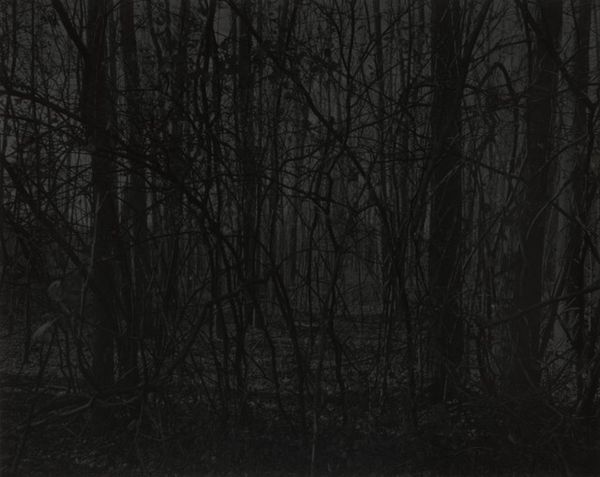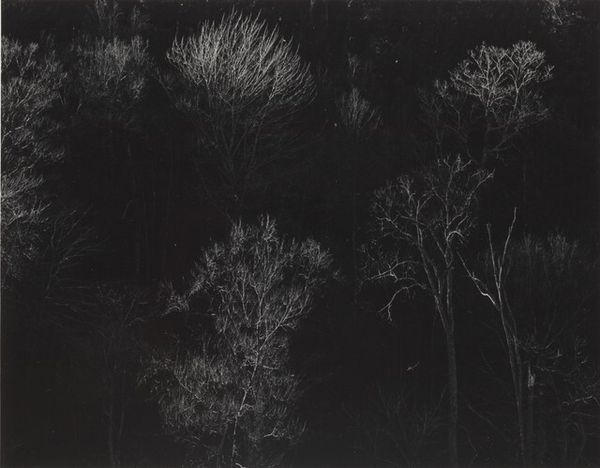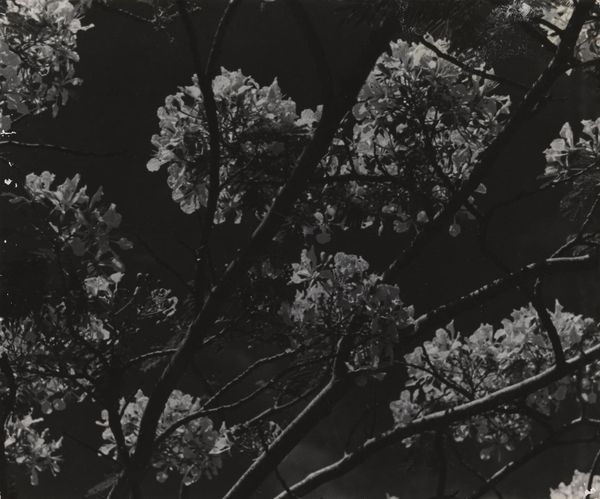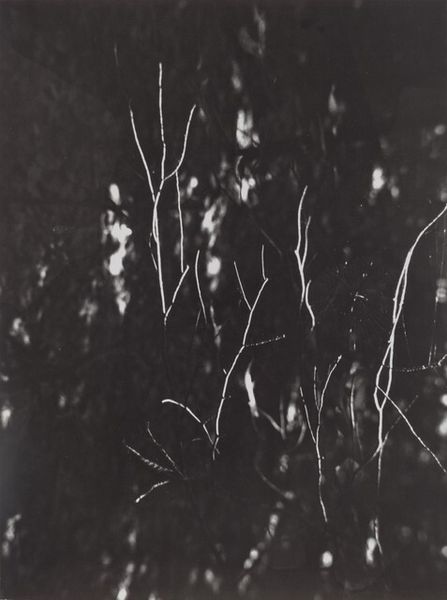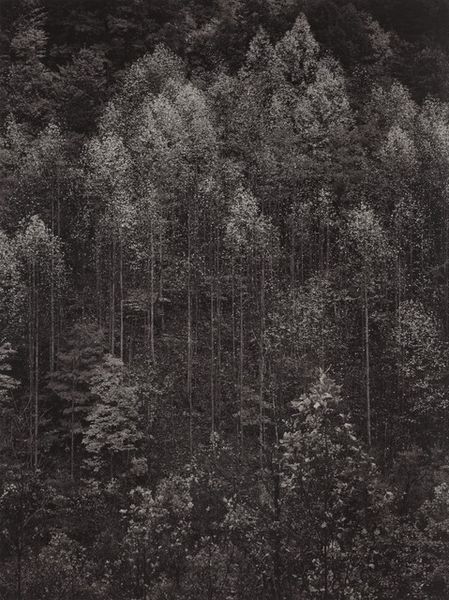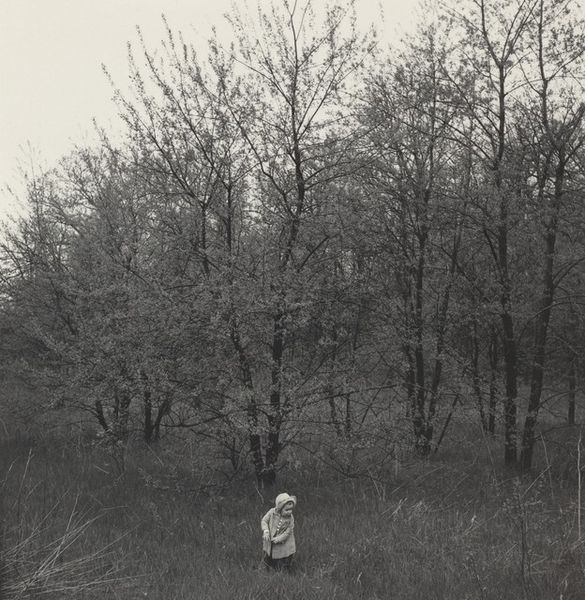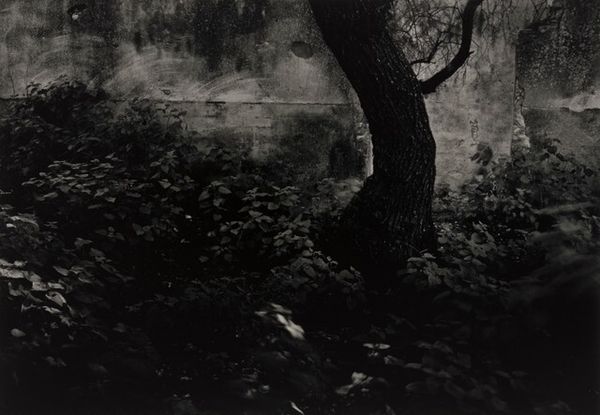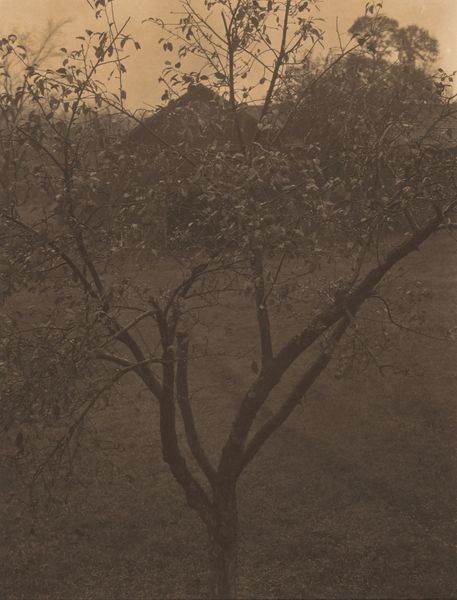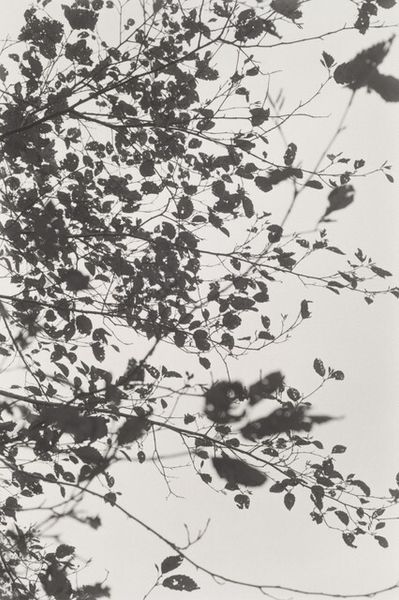
photography
#
contemporary
#
landscape
#
nature
#
photography
#
realism
Dimensions: image: 44.5 × 55.5 cm (17 1/2 × 21 7/8 in.) sheet: 50.8 × 60.4 cm (20 × 23 3/4 in.)
Copyright: National Gallery of Art: CC0 1.0
Curator: We're looking at Dawoud Bey's "Untitled #16 (At Lake Erie)", created in 2017. Editor: It's intensely atmospheric, isn't it? A dark, almost monochromatic landscape. The layering of the foliage creates an overwhelming sensation. Curator: Absolutely. Bey often explores history and memory in his photography. In this series, he is addressing the history of the Underground Railroad. Lake Erie was, of course, a significant crossing point into Canada for enslaved people seeking freedom. Editor: So, this isn’t just nature, it's burdened with that history. And this place functions as a complex site with multiple meanings. The composition reflects that feeling—the almost impenetrable darkness in the foreground suggests the unknown challenges and danger faced during this journey. The trees frame what feels like a murky void; like a portal into the unknown. Curator: Bey’s consistent use of long exposure enhances the emotional weight; it creates a tension that visualizes the temporal complexities that exist in the re-membered past of black people. This image feels less like a document and more like an elegy, creating what Huey Copeland terms, the “temporal drag” of blackness within representation. Editor: You see it as mourning? Curator: It visualizes historical experience; this photograph isn't simply representational. The heavy contrast and almost total lack of light speak volumes. Bey pushes photography past its conventional role of capturing what we see, urging us to also consider the unseeable traces of history that haunt the present. It critiques the institutional practices of erasure, using the photograph to give space to grief and historical trauma. Editor: I think, visually, the ambiguity in the contrast lends the scene this air of uncertainty that powerfully evokes not only the perils of seeking freedom, but perhaps more so, freedom unrealized. The composition is starkly contrasted which mirrors the conflict within American history. The weightiness feels deliberate and meticulously considered. Curator: It underscores Bey's artistic intention to not just depict a place, but to charge that landscape with historical and emotional significance. These scenes visualize a commitment to expanding the public’s understanding of American history. Editor: It's been fascinating to re-examine its emotional undercurrent. The structure supports the historical complexity; the heaviness reinforces the subject matter. Curator: A perfect encapsulation of form mirroring content and its implications!
Comments
No comments
Be the first to comment and join the conversation on the ultimate creative platform.
